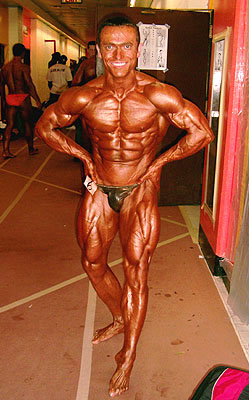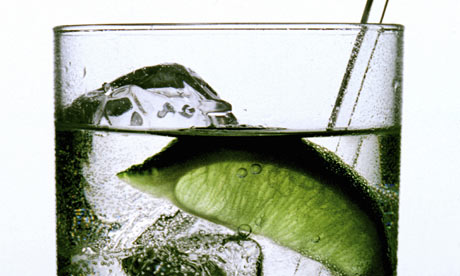In part 1 of “what is my natural muscular potential?” I introduced two models of natural muscular development, which were both derived from natural bodybuilders. In this second and final part, I’ll use a real-world example and see how my stats measure up to both models. I’ll also talk about limitations to these formulae, as well as giving a brief outline of what it takes for someone to reach their muscular potential.
A real-world example
To give you an idea of what these numbers actually mean, I’ll run my own stats through both models to see how close to my genetic potential I am.

My stats:
Stature – 181 cm (5’111/3”)
Body mass – 76.5 kg (168.3 lbs.)
Body fat percentage – 8% (ish)
Lean body mass – 70.4 kg (154.8 lbs.)
Ankle circumference – 8.25”
Wrist Circumference – 6.7”
Bicep circumference – 15”
Using my stature, wrist and ankle circumferences the Casey Butt model predicted my maximal natural lean body mass to be 75.9 kg (167 lbs.).
Since my current lean body mass is roughly 70.4 kg (155 lbs.), this equates to 92-93% of my genetic potential based on this equation.
Using the Martin Berkhan model, my predicted maximal natural body mass at 4-6% is 81 kg (178.2 lbs.). When body fat is taken into account, this equates to a lean body mass of between 76.1 kg (167.5 lbs.) and 77.8 kg (171 lbs.).
Again, since my current lean body mass is roughly 70.4 kg (155 lbs.), this put me at 90-93% of my genetic potential based on this equation, which is remarkably similar to that of the previous equation.
Taken together, these predictions sound about right, as I’ve been weight training for about eight years; the last three or four of which have specifically been aimed at muscular development. Given the extremely slow rate of muscle gain following years of dedicated weight training, I don’t expect to be gaining the predicted 5-7 kg (12-16 lbs.) anytime soon. Assuming I could gain on average 3-4 lbs. per year (if I’m very lucky!) this would take me at least another four to five years or so to reach my apparent genetic limit (unless I turn to steroids, then it would be within a year).
Are there exceptions?
Like any predictive measure, there are always outliers. However, these genetic freaks are few and far between and were purposefully left out of Casey’s model since their drug-free status cannot be verified. Furthermore, as stated in part one, these equations were developed using data collected from elite drug-free bodybuilders (i.e. the people who have won the genetic lottery to begin with and have been training extremely hard and consistently for a decade or more). So, if it were possible to surpass these predictions, it would no doubt be a natural bodybuilder and it would hardly be by a meaningful degree. The average gym-goer going through the motions a few times per week can forget about reaching such stats, at least without drugs. That’s not to say these individuals cannot attain visually impressive physiques.
So, for all intents and purposes, these predictions cannot be surpassed. As such, any individual that can be verified to exceed such stats, and isn’t a pro natural bodybuilder with at least eight years of training behind them, is clearly using drugs (whether they admit to it or not). While I have nothing against people who take steroids, I dislike people who claim to be natural when they’re clearly not.
Aside from the dishonesties of some steroid users, some people are genuinely drug-free and “appear” to surpass such predictions. For example, people are notorious for severely underestimating their true body fat percentage. As such, these individuals may think they surpass the predictions (particularly Martin Berkhan’s due to the fixed body fat reference point), whereas in fact, the extra fat that they are not accounting for is assumed to be muscle. Therefore, if this individual actually reduced their body fat to the 4-6% body fat range, they would notice a substantial loss in body fat, which will no doubt put them within their predicted muscular potential.
I should mention that this might not be due to the person lying about their body fat measurement; rather, it is more often than not due to the inaccuracies of the various body composition techniques. For example, after measuring skinfold thickness (assuming the measurements are taken by a competent person), these skinfold measurements are entered into one or more of many equations available for predicting body fat percentage. Such equations are only as valid as the sample they originated from, so it is not uncommon to see body fat estimates for lean individuals deviate by as much as 5% or more, depending on which equation is used, despite using the same skinfold measurements.
So, using a fictional example, say that a person is 6” tall and weighs 87 kg (191 lbs.) and their chosen skinfold equation incorrectly puts them at 6%, this would equate to a lean body mass of 81.8 kg (180 lbs.), which surpasses their predicted natural potential. In reality, their true body fat percentage could easily be 10% due to the lack of validity of the chosen skinfold equation. 87 kg (191 lbs.) at 10% body fat would then equate to a lean body mass of 78.3 kg (172.3 lbs.), putting them within their predicted genetic potential.
 Leigh Peele wrote an excellent article about this, which allows people to verify their body composition results via real-life examples of a range of body fat percentages. For example, a bodybuilder at contest condition should set the benchmark for minimum attainable body fat percentages (3-5%), which should make for a more accurate estimation of their own body fat percentage in spite of what the skinfold equation spits out. The picture to the right shows what a minimum attainable level of body fat actually looks like on a natural bodybuilder.
Leigh Peele wrote an excellent article about this, which allows people to verify their body composition results via real-life examples of a range of body fat percentages. For example, a bodybuilder at contest condition should set the benchmark for minimum attainable body fat percentages (3-5%), which should make for a more accurate estimation of their own body fat percentage in spite of what the skinfold equation spits out. The picture to the right shows what a minimum attainable level of body fat actually looks like on a natural bodybuilder.
Limitations of the formulae
These equations were developed using males, for males. As far as I’m aware no such predictions exist for women. However, if they did, they would be WAY below the values outlined here.
Martin Berkhan highlights a limitation to his formula in that it only “assumes average genetics” (which is also the case for Casey’s equation). There are true cases of non-responders to weight training meaning that the notion of a “hard gainer” is indeed correct. As the term hard gainer implies, these individuals have a more difficult time gaining muscle mass, despite appropriate training and nutrition. Because of this, these people may not ever come close to the limits of the predictions outlined in part 1.
This sparks the question, “if there are hard gainers, surely there are easy gainers?”. While there are genetically gifted individuals, in Martin Berkhan’s experience, “high-responders simply gain muscle mass faster than someone of average genetics; the cap for maximum muscular potential (height - 100) does not seem to be raised by much”.
How do I go about reaching this potential?
Now that the limits of natural muscular development are understood, I will briefly outline the steps someone should take in order to get there, or as close as possible.
Perhaps the most important factor in realising this potential is consistency. Despite all the ridiculous marketing claims, the only way to gain muscle quickly is through the use of drugs. It is possible for naturals to gain weight quickly with the use of weight gainers etc. but the majority of this mass will be fat. Any natural who has achieved such stats has been training consistently week in week out, month in month out, year after year, for at least a decade, or close to it. Given the diminishing rate of muscle growth over a training career, a year’s worth of hard work in the gym can bring about a 1-2 lb. gain in muscle tissue after five or so years of training, which can be disheartening even to the most dedicated trainees. Nutrition and training author, Lyle McDonald of bodyrecomposition.com has estimated the potential for muscle gain on a yearly basis in table 3 to give people realistic expectations of rates of muscle growth in order to set appropriate training goals.
Table 3. Potential rate of muscle gain per year
| Years of proper training |
Potential rate of muscle gain per year |
Per month |
| 1 |
9-11 kg (20-25 lbs.) |
1 kg (2 lbs.) |
| 2 |
4.5-5.5 kg (10-12 lbs.) |
0.5 kg (1 lb.) |
| 3 |
2.3-2.7 kg (5-6 lbs.) |
0.25 kg (0.5 lb.) |
| 4 |
0.9-1.2 kg (2-3 lbs.) |
Not worth calculating |
| 5+ |
0.45 kg (1 lb.) |
Not worth calculating |
Speaking of training goals, a good way to plan for progress is to keep a training log. That way, you can objectively track your progress as opposed to just going in the gym and lifting based on how you feel that day. Following the FITT principle, this progression can be in the form of frequency (how many times per week), intensity (typically the load lifted), type (addition or rearrangement of exercises) and time (volume; set and rep schemes). The concept of tracking progress can also instil a degree of motivation, especially when you see your lifting numbers going up on a consistent basis.
Regardless of the other points above, you can never come close to your predicted muscular potential unless you have a solid training and nutrition regime in place.
Nutrition sets the potential for muscle growth. If adequate calories and protein are insufficient, you can forget about gaining muscle optimally. Calories should be set at just above maintenance for optimally gaining muscle, whereas protein should be a minimum of 2 g per kg of bodyweight, ideally more (e.g. 2.5–3 g/kg). In this article I discussed protein requirements in more depth.
In terms of training, the focus should be on gaining strength in the following lifts and/or their variations at least once per week (preferably in the 6-8 rep range, on average): deadlifts, squats, bench press, press, barbell row and chin-ups; muscle gains will follow. Some direct calf work wouldn’t hurt either. Isolation exercises such as bicep and wrist curls, made popular by drug-fuelled bodybuilders (and what most people seem to do in the gym!), aren’t necessary for the first one or two years of training; the focus should be on the outlined exercises which give the trainee the biggest reward for their time invested in weight training. Isolation exercises may be introduced after this period in order to bring up lagging body parts, but they shouldn’t interfere with progress in the main lifts; they should enhance it, if used correctly.
There is obviously much more to it than this (e.g. optimal set and rep schemes, training frequency, volume, periodisation etc), but this is a good start for beginner/intermediate trainees (and the vast majority of gym-goers) in order to develop good strength and muscle gains.
To conclude, I’ll reiterate that the point of this article is not to appear negative and state what someone will or will not achieve, rather, it aims to provide a realistic expectation of what actually is achievable without the use of drugs. Casey summarised his findings rather nicely, “The equations presented in this text accurately and precisely estimate the weights and muscular measurements of practically every elite-level drug-free bodybuilding champion of the past 61 years…. If the equations were not valid, for any theoretical reason, this simply would not be true. Considering bone structure size and muscle belly lengths they also apply to the average aspiring bodybuilder. It is not my intention to imply that no one will ever surpass the predictions of this text. It is, however, my intention to put what such an accomplishment would represent into proper context and likelihood”.







